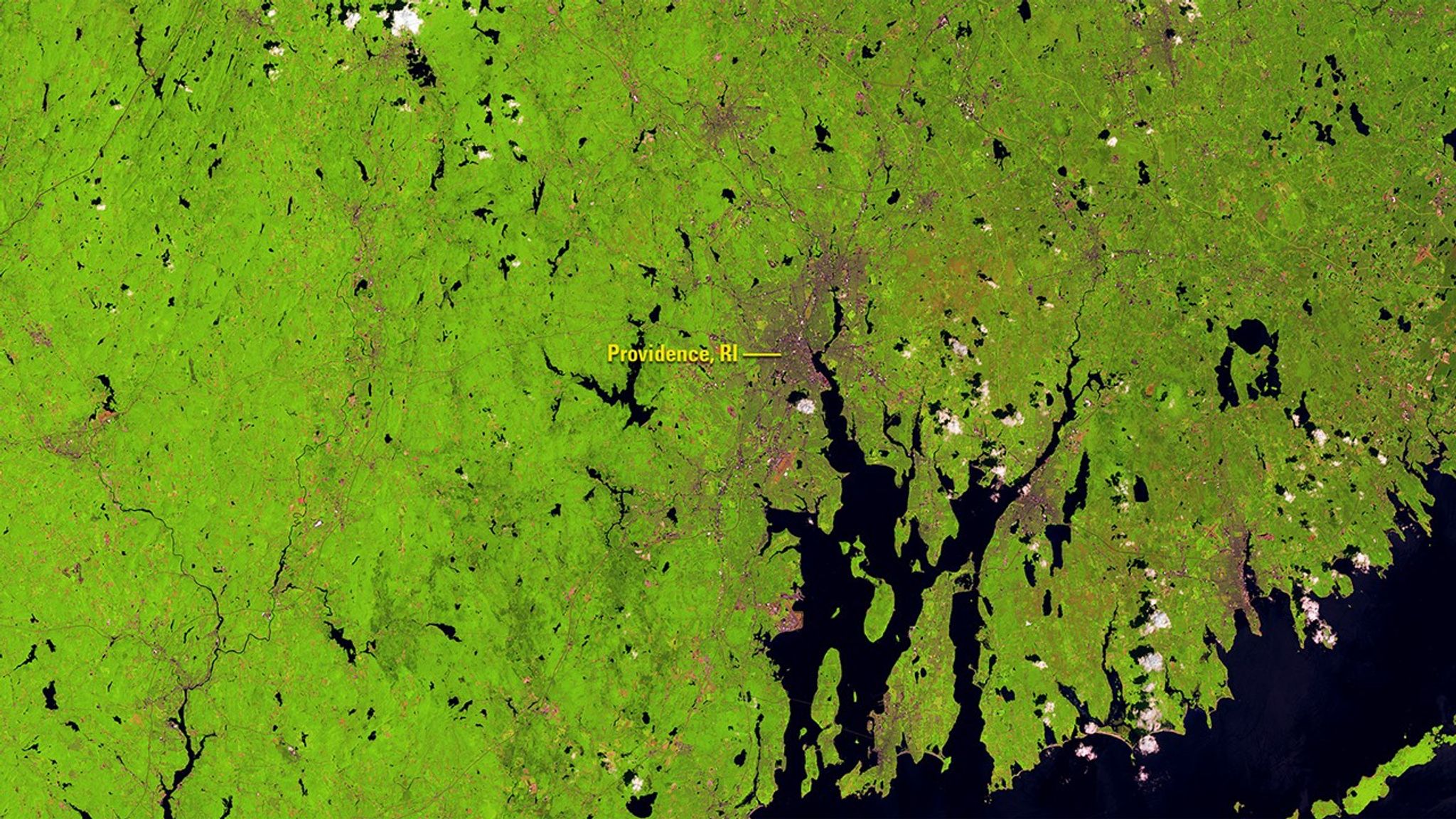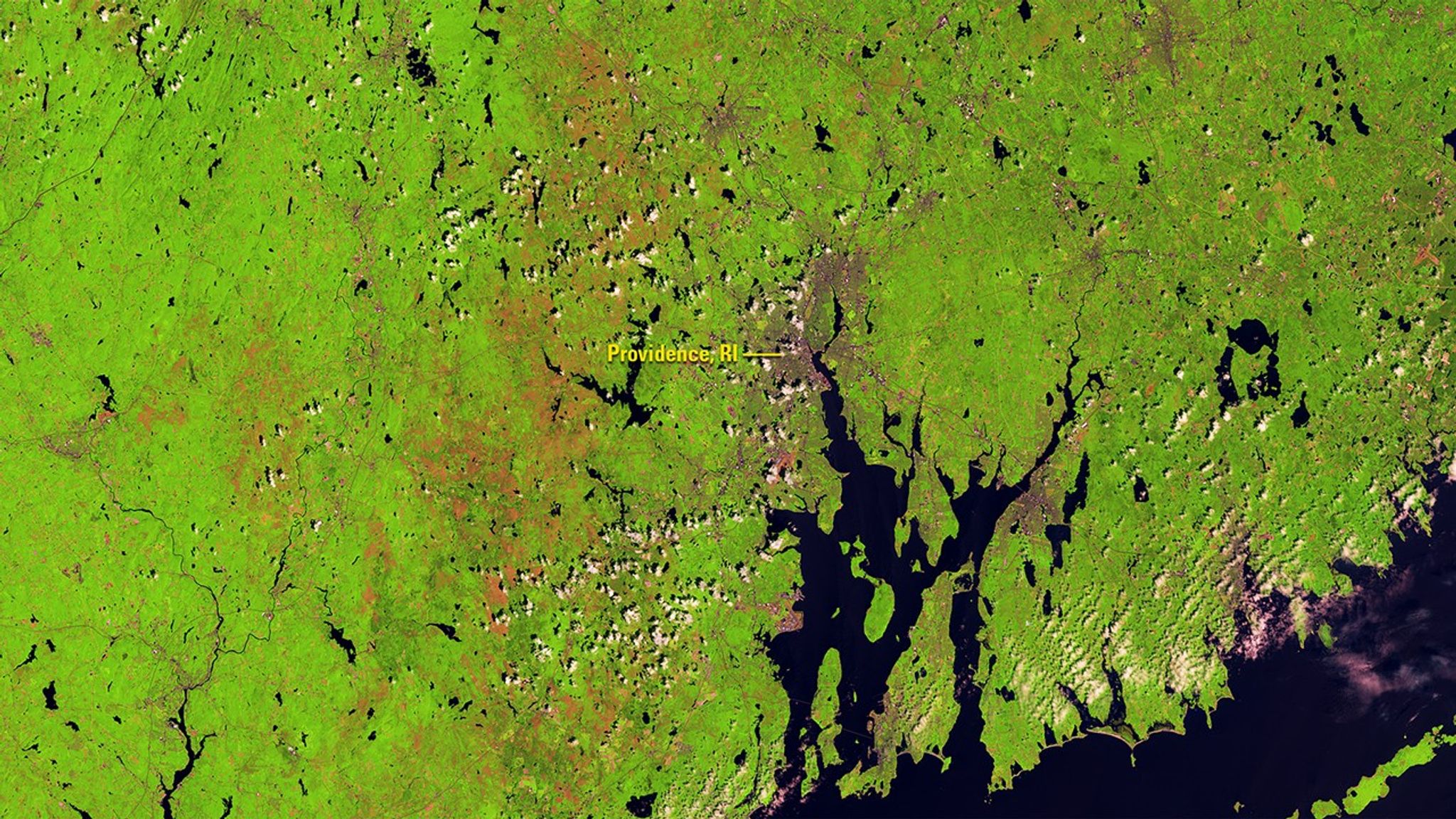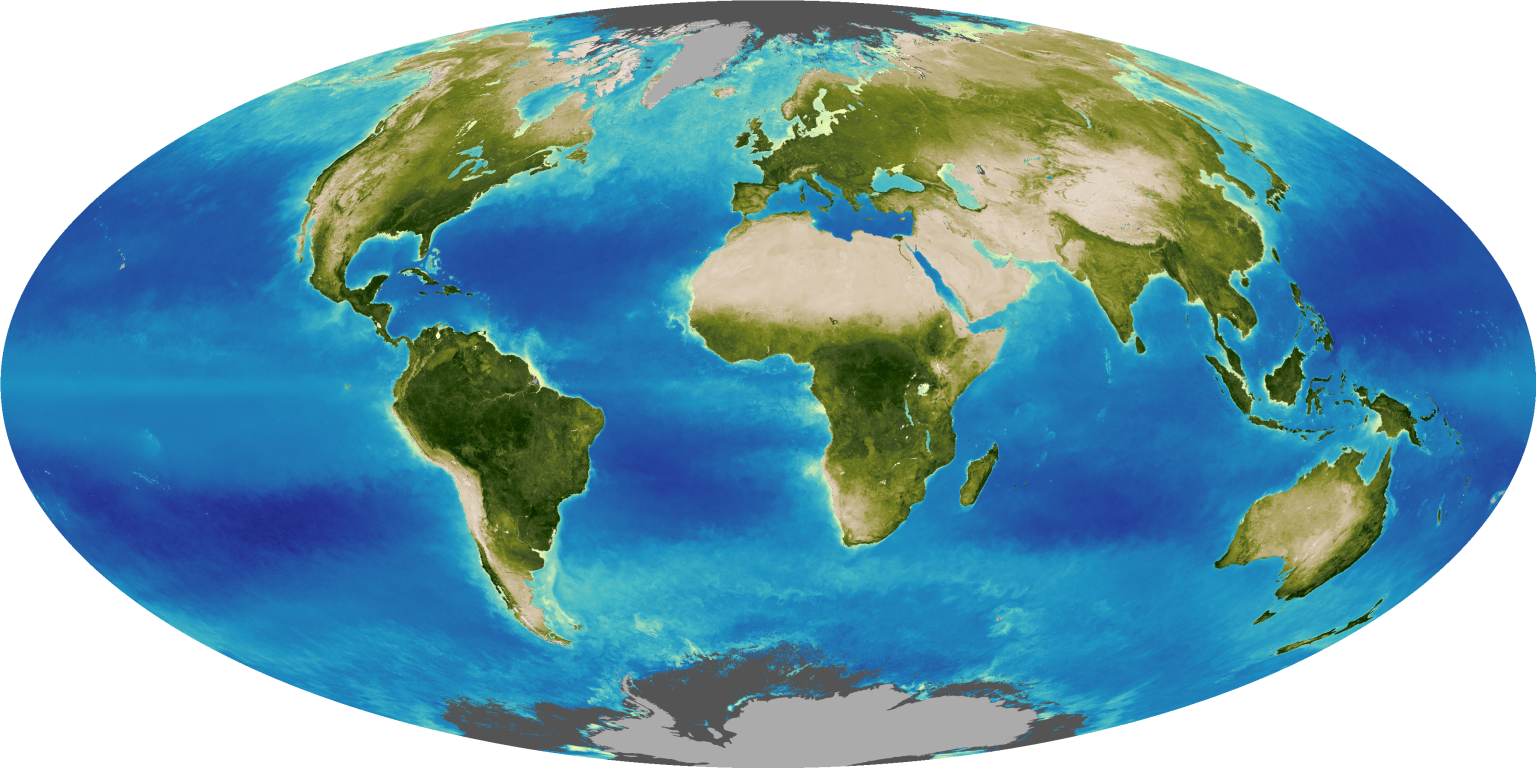

Before and After
Gypsy moth caterpillars damage Northeastern U.S. forests
July 11, 2015 - July 13, 2016
An outbreak of European gypsy moth caterpillars defoliated forests across southern New England and the Mid-Atlantic region of the U.S. during spring and summer, 2016. In the 2015 image of countryside surrounding Providence, Rhode Island, healthy forest appears light green. Damage from the caterpillars appears as a dull peach color in the 2016 image. Two successive dry springs and an accompanying drought, which weakened a ground-dwelling fungus that can kill the caterpillars, are considered responsible for the unusually severe outbreak. Images taken by the Operational Land Imager onboard Landsat 8. Source: U.S. Geological Survey (USGS) Landsat Missions Gallery; U.S. Department of the Interior / USGS and NASA.
































